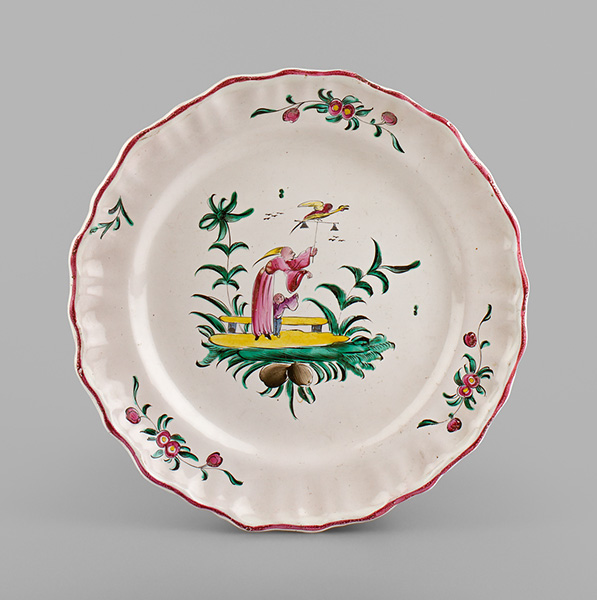
Faience with polychrome decoration in low-temperature colours, c. 1780-1800, Varages, Provence, France
In the production of painted faience or porcelain vessels, the low-temperature colours that were most susceptible to being burnt or reduced (mainly red tones) were fused during the third and final firing. This was usually done in a special muffle kiln where the pottery was placed in a closed-off box so as to avoid direct contact with the flames. The firing temperatures were usually between 650°C and 850°C.
Translation Sandy Haemmerle
German: Muffelbrand
French: Troisième feu, feu de moufle

